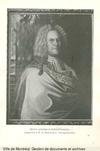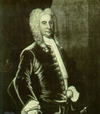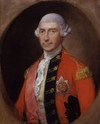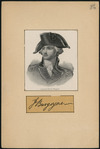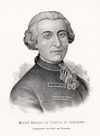seigneuries in New France. On 10 April 1733 he was granted a fief of six square leagues, called Livaudière, on Lake Champlain, but the undeveloped property reverted to the crown in 1741. In 1735 Péan
.
Pécaudy de Contrecœur became a knight of the order of Saint-Louis on 25 March 1738, and that same year he prepared a map of Lake Champlain. In October 1741 he was in command of Fort Saint
Beauharnois granted Louis-Joseph a large seigneury, called Rocbert, on Lake Champlain. It was reunited to the king’s domain in 1741, but was returned to him on 9 July 1742. Michel also
attacked by Colonel Francis Nicholson* and his army, invading the colony via Lake Champlain. Deschaillons was put in command of one of
Schuyler volunteered to join a colonial expedition against Canada. Troops under the command of Major-General Fitz-John Winthrop were to proceed against Montreal via Lake Champlain, while Sir
second in command, an offer that Lévis was glad to accept. No sooner had the expedition left Montreal, however, than it was recalled and sent post-haste to Lake Champlain. Word had been received that Major
was not present at the fall of the city, for Wolfe had sent him with dispatches to General Jeffery Amherst* at Crown Point on Lake Champlain
the Ohio, Niagara, and Lake Champlain fronts for 1755. Johnson was selected to command the expedition against Fort Saint-Frédéric because of his influence with the Indians, who were a key factor in
Bourgeoys* set up missions at Champlain and Batiscan. But “lacking the resources which were indispensable for living and for giving charity in their turn,” the sisters had to withdraw in 1685. Even though
interested habitants. In 1733, however, he was diverted to search for ship timber in the Lake Champlain region. This trip was significant. He advised the minister of Marine, Maurepas, that no trees could be
months: an attack against the French at Fort Saint-Frédéric (Crown Point, N.Y.) on the western shore of Lake Champlain, which had become a base for raids upon the frontiers of New England and New York. Its
more important than the covering letters, are not included. Doughty’s edition of Knox, Historical journal, is valuable, as is another Champlain Society publication, Logs of the conquest
Loring’s successful naval foray on Lake Champlain following the capture of forts Carillon and Saint-Frédéric (near Crown Point, N.Y
be employed in invading Canada by the Lake Champlain line. On 21 June he arrived at the head of Lake George with a large part of his army. Further advance would depend on water transport, and on
Niagara (near Youngstown, N.Y.), he was sent to the Lake Champlain region, and he served at Fort Saint-Frédéric (near Crown Point, N.Y.) and Fort Carillon (Ticonderoga, N.Y.). He consequently took part in
.
On 5 Aug. 1763 Brown and Gilmore signed a partnership agreement, each putting up capital of £72. Travelling by way of Springfield (Mass.), Albany, Lake Champlain, and Montreal, Brown reached
first of the troops arrived in May, Burgoyne himself late in June. Carleton then followed the Americans in their retreat up Lake Champlain, with Burgoyne as his second in command. In November, at the
, and the court of France accorded him no further reward or honour. On the other hand, in 1758 Vaudreuil granted him the seigneury of Alainville, southwest of Lake Champlain
Champlain and afterwards began trading in forest products. Indeed the “seigneur” was, for a time, also a businessman.
Christie believed above all in the
Murray and others. Within months of receiving his commission Collins was busy fixing the boundary between Quebec and New York eastward from the St Lawrence River to Lake Champlain along the


